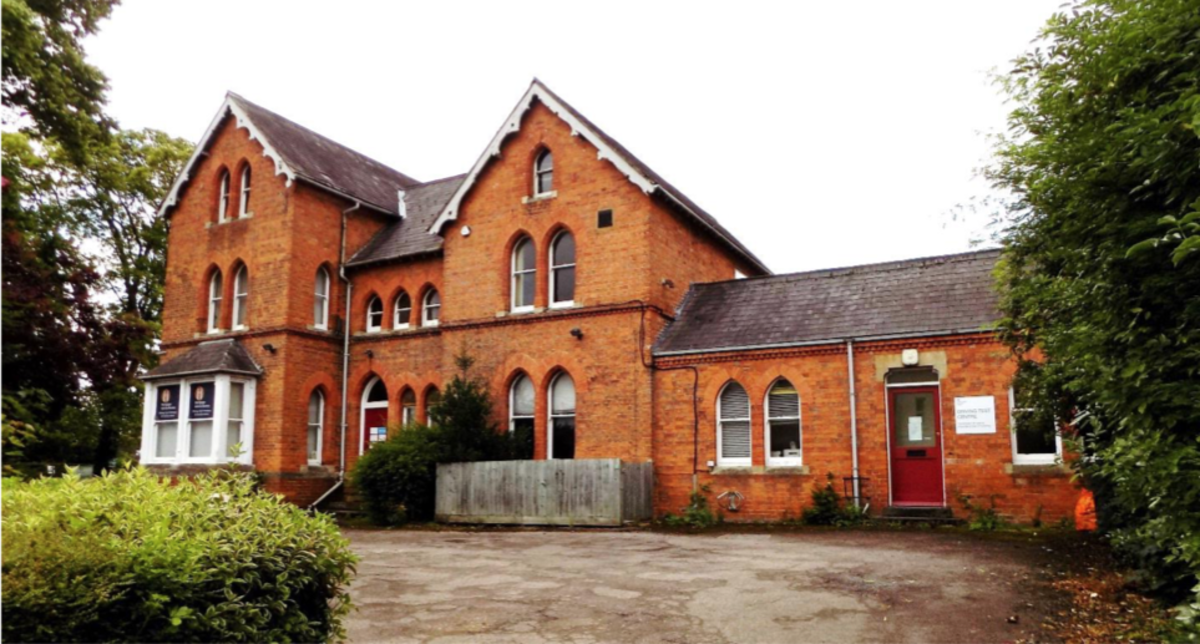3 West Bar
Application No.: 19/00958/F - 3 West Bar Street Banbury - Change of Use of existing building together with a 2.5 storey high extension to the eastern elevation to facilitate the conversion of the building to 8 No residential units, associated car parking, bin and cycle storage facilities and amenity space provision
Thank you for inviting the Banbury Civic Society to comment on this application.
As you are no doubt aware, No.3 West Bar Street (hereafter referred to as no.3 West Bar) is a locally- listed heritage asset, lying within the West Bar Character Area of the Banbury Conservation Area. Whilst not statutorily Listed, it lies within the setting of multiple Listed buildings. Since the formal adoption this year of the 2017 Banbury Conservation Area Appraisal, it has had the added protection of an Article 4 Direction, protecting it from normally permitted development. Banbury has had a Local List for a number of years, but it only since the adoption of the 2017 update of the Banbury Conservation Area (in 2018) that the Local List has had statutory force. The building is attached at its west end to a terrace block of high-status Victorian villas which is also locally listed (5-13 West Bar Street). Both no.3 and nos 5-13 are unusual in Banbury on account of their Gothic Revival architecture. (For the Local List and Article 4 Directions, see the Banbury Conservation Area Appraisal, July 2017, notably pp. 120 and 127 -http://modgov.cherwell.gov.uk/documents/s38854/Banbury%20Conservation%20Area%20Appraisal%20- %20Appendix.pdf )
Significance of the Asset
Given the heritage sensitivities of the building and its setting, it is also a surprise that there is no evidence that the advice of your specialist officers has been sought at pre-app.
Given the sensitivities of the site, it is more than a surprise that the application appears to have been successfully validated without a either a Heritage Statement or a Design & Access Statement.
A DAS is a validation requirement required under the PPG
20140306 and the Town and Country Planning (Development Management Procedure) (England)
Paragraph: 030 Reference ID: 14-030-
(Amendment) Order 2013.
A Heritage Statement is a requirement under paragraph 189 of the NPPF: “In determining applications, local planning authorities should require an applicant to describe the significance of any heritage assets affected, including any contribution made by their setting. The level of detail should be proportionate to the assets’ importance and no more than is sufficient to understand the potential impact of the proposal on their significance. As a minimum the relevant historic environment record should have been consulted and the heritage assets assessed using appropriate expertise where necessary.”
In order to understand where the significance of a heritage asset lies, ‘Conservation Principles, Policies and Guidance’ (English Heritage, 2008) is commended to LPAs to ensure that all decisions about change affecting the historic environment are informed and sustainable. This document describes a range of four ‘heritage values’ that constitute a heritage asset’s significance. These heritage values are: aesthetic value, evidential value, communal value and historical value.
The aesthetic significance of no.3 West Bar is derived from the irregularity of its plan-form, its two principal elevations facing West Bar Street and The Shades, both with irregular roofline, high chimney stacks and decorative barge-boards, its locally-made brick finish, its distinctive Gothic window and door detailing, its group value with the attached terrace of Gothic villas and its relationship to West Bar Street and The Shades, with surviving boundary hedges and landmark trees. The aesthetic vale of the buildings is diminished to an extent by extensive car-parking and the two truncated chimney stacks and four inserted NHS-period steel casement windows in the east elevation.
As a house built for a well-to-do and successful GP, part of the evidential value of the asset derives from the large size of the building, indicative of the wealth of the Doctor who built it, and the size of their family and domestic staff. These features indicate of the social status of a successful GP in the 1870s, the house being one of the largest Victorian houses in Banbury, today exceeded only Wood Green (now Frank Wise community special school) and The Elms (now The Elms Centre of the Horton Hospital), both built for members of the wealthy Gillet banking family. In terms of evidential value, much the rarest and certainly the most important part of the building on a regional and national level is the matching single- storey element at the west end, built as the Doctor’s surgery and consulting rooms. This is indicative of the history and origin of the building and of local healthcare provision in the days prior to the NHS. Few such annexes are known to survive anywhere. The building overall, and this annexe in particular, provide a fascinating companion to the Grade II-Listed Horton Hospital, which is again built in red brick Gothic.
No.3 West Bar draws communal value from its prominent location on West Bar Street, only a few metres from Banbury Cross. It has particularly high communal value to the many residents who were registered at its GP surgery in NHS days and to many of the more elderly who are old enough to remember the main building as a Doctor’s house and who can recall the single-storey annexe as the public-facing part of the practice.
The building’s historical value is similar to its evidential value, viz. the size, single-storey surgery and decorative treatment all being indicative of the high social status of a successful GP in Victorian times and of healthcare provision in the days prior to the NHS. The building overall, and its annexe in particular are certainly now certainly unique in North Oxfordshire, provide a fascinating companion to the Grade II- Listed Horton Hospital, which is again built in red brick Gothic.


